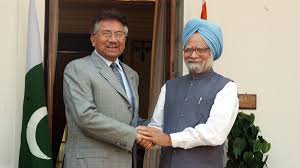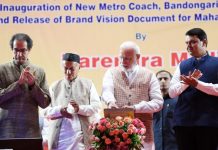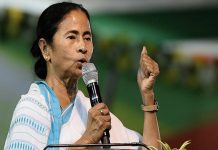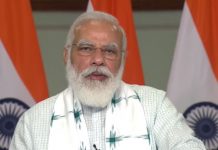Former prime minister Manmohan Singh’s recent passing marks not just the loss of a former Indian Premier but also the end of an era and a missed opportunity—one that, if seized, could have reshaped the history of Kashmir and the subcontinent. A report by Riyaz Wani

Former prime minister Manmohan Singh’s recent passing marks not just the loss of a former prime minister but also the end of an era and a missed opportunity—one that, if seized, could have reshaped the history of Kashmir and the subcontinent. Now we can only look back wistfully at what seemed so close at hand but couldn’t be accomplished.
In his book ‘Neither Hawk, Nor Dove,’ former Pakistan foreign minister Khurshid Mahmud Kasuri has reminisced about the 2004-07 India-Pakistan engagement pursued by Singh and his then Pakistani counterpart Pervez Musharraf, which nearly brought Kashmir issue close to settlement. For example, Kasuri writes that the two countries were putting finishing touches to the agreement by the time Musharraf lost his grip on power towards the end of 2007. It was around September-October in the year that Singh was scheduled to travel to Islamabad to sign the deal. The contemplated solution – no border re-adjustment, demilitarization, self-governance, and joint mechanism between divided parts of Kashmir – was a win-win for both the countries with almost all of the Kashmiri political opinion except Geelani on board.
As the book now reveals, Pakistan had agreed to withdraw troops from Pakistan Administered Kashmir after India demanded a quid pro quo for doing the same on this side of the border. The neighbours had agreed to conclude an “agreement within one year over reduction of troops and the process of demilitarization”.
On self-governance for Kashmir, India had insisted that it would only guarantee that quantum to territories under its control as Pakistan granted to PoK. The two countries had “agreed that within one year of the agreement, India and Pakistan would conclude a charter of principles regarding self-governance and that the nature and quantum of self-governance would be the same on each side”.
Kasuri writes that by the time Musharraf was ousted from office, Pakistan and India had made progress on the last of the contentious points of his four-point settlement formula for Kashmir that had brought the two countries tantalizingly close to a solution. This was about creating a joint consultative mechanism between the divided parts of Jammu and Kashmir. The two countries had agreed that such a mechanism would consist of a specified number of elected members from each of the two units. There was also an agreement on “the principle of the presence of Pakistanis and Indians” in this mechanism. What was still under discussion was “the manner of the presence and association” of the two countries with the arrangement.
But after Musharraf’s exit followed by the Mumbai attack that killed 166 people, everything changed. Although Singh remained in power over six more years, there was no further movement in either Indo-Pak relations or Kashmir resolution. And with the loss of power by the Congress in 2014 and taking over as prime minister of Narendra Modi, things went in reverse direction. Subsequently, in August 2019, abrogation of Article 370 that granted J&K some measure of autonomy, altered the very complexion of Kashmir issue. India removed it from the table as an issue to be discussed with Pakistan. After 2014, Singh retired from politics.
When he visited Jammu and Kashmir in September 2017 as the head of a Congress delegation, he evoked some nostalgia about his tenure, a period during which a solution to the Kashmir issue had seemed within reach. Singh went about his activities in his familiar inconspicuous way. He chose to only listen and not issue any statement, nor talk to the media. But he struck a chord as a throwback to a time when the centre apparently tried to be sensitive if not accommodative towards the issues facing J&K. His ten years at the helm – 2004-2014 – had witnessed the most promising peace process between India and Pakistan that had nearly culminated in a resolution of Kashmir. At one point of time as the Kashmir solution seemed close at hand, Singh had famously talked of a time when people in India would be able to have “breakfast in Amritsar, lunch in Lahore and dinner in Kabul”.
There was some public criticism of Dr Singh too. Some people argued that despite making attempts and starting many initiatives on internal and external fronts to resolve Kashmir, Singh had baulked at taking these to their logical conclusion. Besides holding substantive negotiations with Pakistan over the then Pakistan president Pervez Musharraf’s four-point formula for Kashmir resolution, Singh had also set up five working groups and the three-member group of interlocutors to evolve a comprehensive response to the then state’s problems but none of their recommendations was followed through.
In his book, ‘In Pursuit of Peace,’ the late Indian diplomat S.K. Lambah provides a comprehensive account of the behind-the-scenes efforts led by Singh and his then Pakistani counterpart Pervez Musharraf to secure peace between India and Pakistan by resolving Kashmir. The “accord” being worked out between the two countries on Kashmir aimed to make borders irrelevant without redrawing them, with key elements such as bus services between two parts of Kashmir already in play during Singh’s tenure.
Lambah’s book also highlights the possibilities for peace that presented themselves over the past quarter century, including the Delhi-Lahore bus service that began in 1999, the visit of Prime Minister Atal Bihari Vajpayee to Islamabad in 2004, General Pervez Musharraf’s visit to India in 2005, and the near-reopening of consulates in Mumbai and Karachi, among others.
The current state of affairs is far from promising, with no direct flights, hardly any visas issued, and no bus or train services between the two countries. As Lambah noted in his book, India-Pakistan hostilities have become an instrument of political mobilization and that the painful memories of partition are being revived. He pointed out that hate is the guiding political philosophy of both the countries today, and as long as this remains the case, no channel, front or back, will work.
The situation has considerably transformed since, and in almost every sense: regionally in terms of the growing power disparity between India and Pakistan, and in J&K too, which has since been divested of its special status and downgraded into two federally controlled units, in other words, two union territories. This, in turn, has altered the character of the Kashmir issue as we understood it.
And if at all the two countries return to dialogue in the near or medium future, it seems hardly probable that they will revisit the Four Point Proposals. But should the two countries choose to go back to them as a broader framework for settlement, they will need to adapt it to the new reality. But again, getting to that point won’t be easy.












